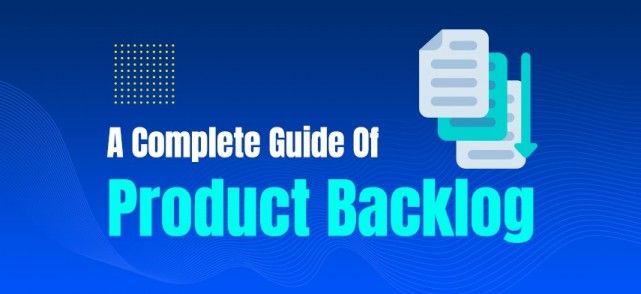Get in-depth knowledge of Product Backlog, it's Characteristics, how to create a Product Backlog, and why Product Backlog is important and more at one place.

The product backlog is a list that contains and prioritizes the details of every little task you require to include in your product. If you want to make any changes to your product, then product backlog is the only source of requirements. As a product owner only, you will be responsible for its availability, content, priority, and ordering of the product backlog.
A product backlog never completes; you have to work on the product backlog list continually. The product backlog continuously evolves to recognize what your product requires to be perfect, useful, and worth the competition.
As the development team executes on the roadmap’s bigger picture, the product backlog should communicate what comes next on the team’s to-do list. If you want to make your product backlog perfect, then first you have to make it DEEP. DEEP is the acronym of Detailed, Estimated, Emergent, and Prioritized.
What Does a Product Backlog Include?
It is a tricky question because what belongs in a product backlog varies from team to team. However, In general, a product backlog includes some typical items like bug fixes, user stories, and other tasks like:
- New features
- Enhancement to existing functionalities
- Technical debt
- Infrastructure update
In most of the cases, the items are break down into user stories. In a product backlog, the most important things are placed on the top. It helps to know the team what they should deliver first. These items are not just a to-do list. Each of these items is prioritized, estimated, and adds value for the customer.
Who is the owner of the product backlog?

The product owner is the only owner of the product backlog. But, the whole cross-functional team together works on the backlog. When it comes to maintaining and organizing the product backlog, the product owner holds complete accountability.
While ordering the backlog, the product owner may get influenced by customer priority, difficulty in relative implementation, the urgency of receiving feedback, etc. An efficient product owner will look for feedback from the development team, customers, and designers to optimize product delivery.
Here’s a heads-up. You can allow other cross-functional team members to contribute items to the product backlog.
What are the Characteristics of Product Backlog
- On a single product backlog, multiple teams can work together.
- Every product should have one product backlog. A product backlog can have a set of large to very large features.
- You can rank the features based on technical and business value, strategic fitness, or risk management.
- Top-ranked items are divided into smaller user stories during the release planning.
Why is a Product Backlog Important?
The product backlog is a way to put all the product planning and to brainstorm into action. While innovating a product, you’ll come across multiple pieces of feedback from your customers or stakeholders. They will share different ideas to improve your products.
But you can’t use all the ideas, because some of the ideas may not be valuable. So, it’s essential to have a product backlog as it will help you differentiate between a good idea and the ideas that would only waste your time.
Here is some other importance of product backlog:
- A product backlog is prepared to plan the product roadmap.
- The product backlog helps to give estimates to each feature.
- You can change the product backlog as the priories change.
- With the product backlog, you can think long-term about the product.
- It helps you to re-rank the product features according to values.
- Product backlog allows your team to decide what to prioritize and rank the item accordingly.
To view the full blog and this blog "What is a Product Backlog in Scrum" is originally published on Agilemania website.





